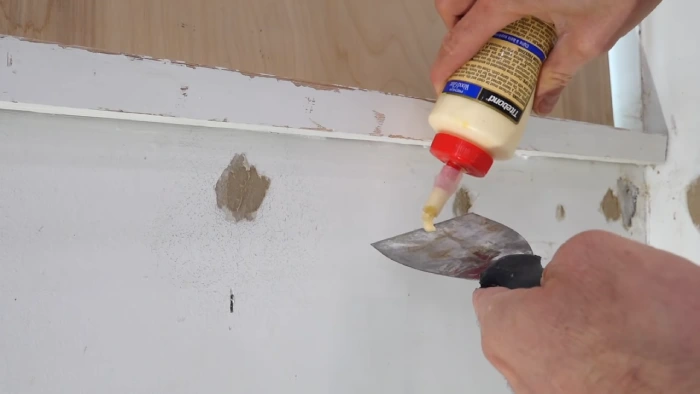Last Updated on March 5, 2023
Torn drywall paper can be an eyesore and make a room look unkempt. Drywall is a staple of modern construction, but it’s not immune to wear and tear. Ripped or torn drywall paper can ruin your home’s beauty, whether it’s due to moisture, age, or accidental damage.
Still, the good news is that repairing torn drywall paper is relatively straightforward. There are many ways to fix torn drywall paper. You can use spackling compound, joint compound, drywall tape, patching compound, wallpaper paste, or the carpet seam sealer.
Simple steps and suitable materials can make your walls look brand new. To fix the torn drywall paper, clean the area first, apply the chosen material, sand it down and make it even with the surrounding wall. So, take pride in your home, roll your sleeves, and start your drywall paper repair today.
What to Use to Seal Torn Drywall Paper for a Seamless Seal?
Sealing torn drywall paper is essential for enhancing a wall’s look. This can be achieved using various materials, such as:
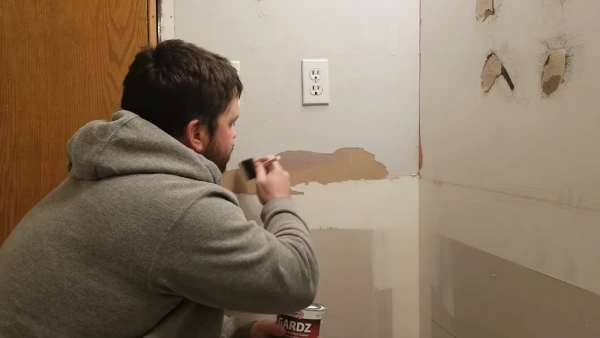
Drywall Tape
If you’re looking for an easy and secure way to repair a crack or seam in your damaged drywall, look no further than drywall tape. Available at any home improvement center, this affordable but effective material bonds together your wall with an adhesive that remains strong and secure long-term.
It’s also incredibly user-friendly, just cut the required length of tape and press it firmly into place. You can create a better seal by applying thin layers of joint drywall compound over the taped area.
Spackling or Joint Compound
Spackling or joint compounding is an amazing way to backfill all those torn drywall seams. Whenever you need a quick fix, don’t sweat it, this product can be quickly applied with a putty knife and then left to dry. Once fully dried, give it a sanding until smoothness is achieved.
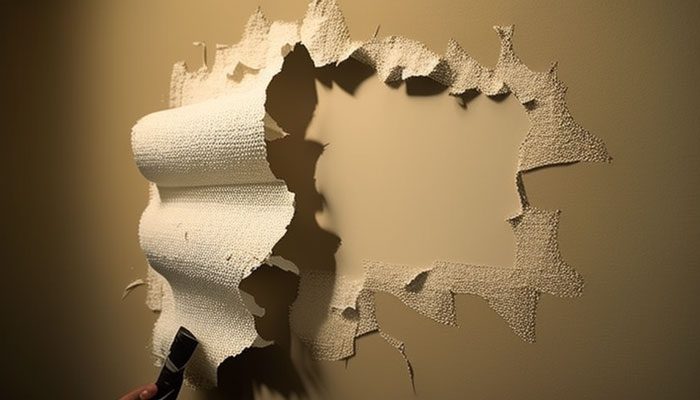
Adding the extra layer of the joint drywall compound provides extra strength against moisture damage, so always do that before using it in wet areas. Since spackling isn’t tricky and requires no extra effort for fantastic results, it’s the perfect solution for patching up wall damage in no time.
Patching Compound
Patching compound is an excellent material for patching up those larger, more noticeable gaps in your drywall. Better than its conventional counterparts like spackling or patching compound, joint drywall mud compound ensures good results when sealing torn seams and cracks.
Plus, its ease of application makes it a real winner. You can use a putty knife or trowel to fill the gap and give it an ultra-smooth finish once dried and sanded down. With patching compound around, you will no longer have to worry about crooked walls or gaps glaring at you.
Wallpaper Paste
Wallpaper paste can be a handyperson’s dream when sealing drywall seams. Although its adhesive properties don’t measure up to those of spackling or patching compounds, wallpaper paste has plenty of uses in home improvement.
Perfect for minor damage like small rips or tears in drywall paper, wallpaper paste provides an easy fix when no large cracks or gaps require extra reinforcement.
Carpet Seam Sealer
Finally, carpet seam sealer can also be used as an effective method of sealing torn drywall paper seams to its strong adhesive properties that help bond together two pieces of material securely every single time.
This type of product should only be applied by those with experience using such materials since improper application could result in further damage. Beware accordingly, then stay safe out there.
How Do You Seal Torn Drywall Paper Raw Edges?
Sealing torn drywall paper raw edges is an essential step in repairing a damaged wall. It requires the right tools and techniques, patience, and attention to detail. You can get a professional-looking finish by following these steps:
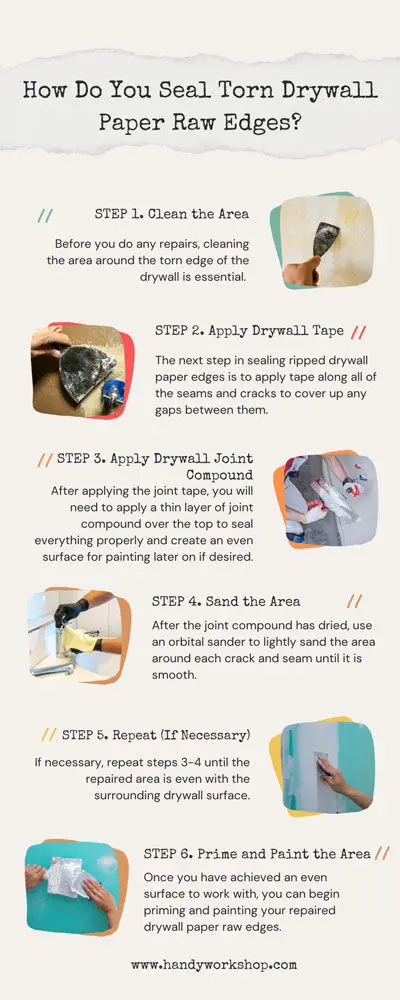
STEP 1. Clean the Area
Before you do any repairs, cleaning the area around the torn edge of the drywall is essential. This helps ensure that there is no dirt, debris, or rough edges on the wall, which could cause problems during the repair process.
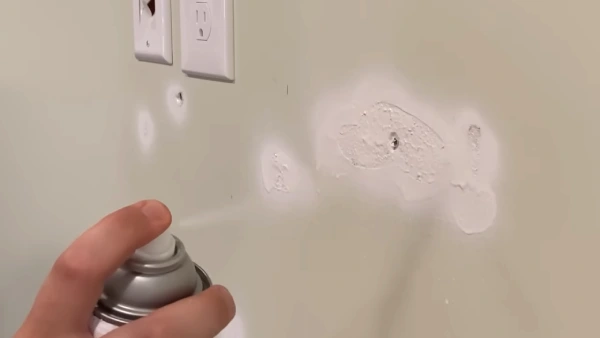
Start using a hand vacuum to remove dust or particles from the surface. Then, use a utility knife or razor blade to cut away any loose or crumbling pieces of drywall and discard them properly.
STEP 2. Apply Drywall Tape
The next step in sealing ripped drywall paper edges is to apply tape along all of the seams and cracks to cover up any gaps between them. Start by cutting a piece of joint tape specifically designed for this purpose with scissors or a utility knife so that it fits over the entire length of each crack or seam being repaired.
Once it’s cut to size, press it firmly into place along both sides of each crack before smoothing out all air bubbles with your finger or putty knife if necessary.
STEP 3. Apply Drywall Joint Compound
After applying the joint tape, you will need to apply a thin layer of joint compound over the top to seal everything properly and create an even surface for painting later on if desired.
Use an eight-inch putty knife to spread it evenly onto each crack and seam before letting it sit overnight until completely dry before proceeding further with repairs or painting if desired.
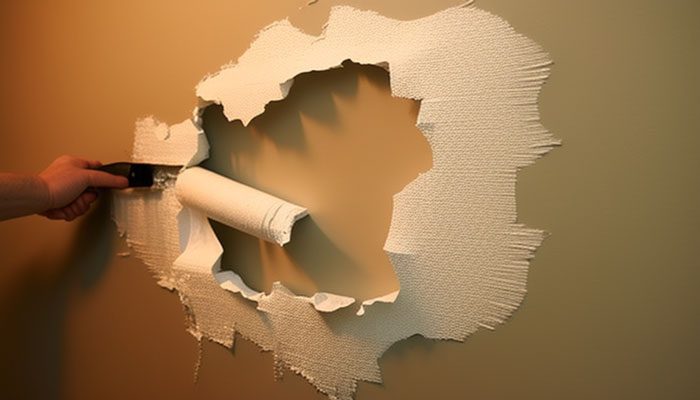
STEP 4. Sand the Area
After the joint compound has dried, use an orbital sander to lightly sand the area around each crack and seam until it is smooth. You want to smooth any bumps or rough spots present, as this will help the repair stick better and make it less visible.
Be sure to use a light touch when sanding, as too much pressure can damage the drywall paper further. Once you have finished sanding, wipe away any dust or debris created, and you can move on to the next step.
STEP 5. Repeat (If Necessary)
If necessary, repeat steps 3-4 until the repaired area is even with the surrounding drywall surface. If you need additional help getting a professional-level finish, look into using a spackle knife or putty knife to repair damaged areas.
STEP 6. Prime and Paint the Area
Once you have achieved an even surface to work with, you can begin priming and painting your repaired drywall paper raw edges. A high-quality primer designed for drywall surfaces will give your paint job a smoother finish and greater protection against moisture damage.
Finally, apply two coats of paint over the primer to perfectly achieve an even finish matching your existing wall color or design scheme!
Can You Skim Coat Over Torn Drywall Paper?
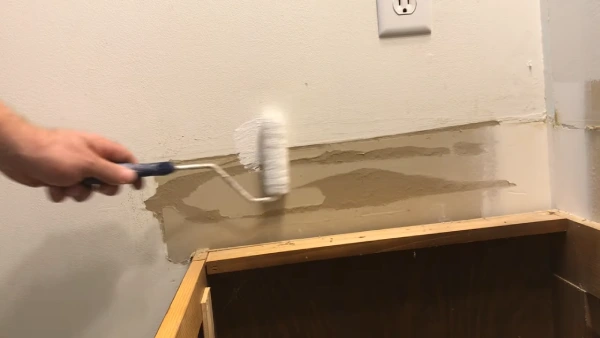
Skim coating over torn drywall paper effectively repairs damage and gives the wall a seamless look. The first step in this process is to thoroughly clean the area and apply a sealer to ensure the wall is fully sealed.
Once the sealer has dried, it is recommended to use a 6-inch drywall knife with an all-purpose joint compound to fill in any gaps, cracks, or chips in the wall. After this, use a 12-inch drywall knife to feather out the edges of any repairs made with the smaller knife.
Finally, apply several coats of joint compound with a 14-inch taping knife until you achieve your desired finish. Allow each layer of joint compound to dry completely before applying more material to prevent any cracking or bubbling when you are done.
Can You Paint Over Torn Drywall Paper?
Painting directly over torn drywall paper can be problematic due to its fragile condition and lack of proper adhesion between it and the new paint surface. Also, if an attempt is made at painting directly over the torn paper, it may cause further damage by causing bubbles or tears in the remaining paper.
Instead, it is recommended that you repair any issues with torn drywall first by filling in any holes and gaps and smoothing out any rough patches on your walls before painting them.
Repairs such as these will provide a sturdy foundation for your paint job while allowing for better coverage of areas affected by tearing or wear and tear from previous years of use.
What Happens If You Don’t Prime Repaired Torn Drywall Paper Before Painting?
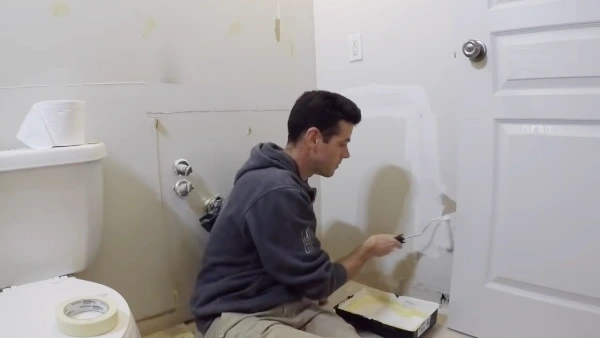
If you do not prime torn drywall papers before painting, the paint will not adhere to the surface as effectively. The lack of priming can also result in a lower pigment ratio of the topcoat, meaning that colors may not be as vibrant and bright when applied to unprimed drywall.
Also, the drywall paper may increase porosity and absorption, which could cause colors to fade or run over time. Paint can flake off quickly or even bubble without a primer due to inadequate adhesion.
Furthermore, unprimed repaired drywall paper is more susceptible to stains from water and other liquids, resulting in discoloration on walls.
Revamp Your Walls: Repair Torn Drywall Paper Easily
Sealing torn drywall paper can be tricky but rewarding. Various materials and methods can seal the raw edges of drywall paper and create a seamless seal. Drywall tape is the most common option for pre-filling gaps in the drywall paper before sealing it.
Spackling or joint compound can also fill the gaps, while wallpaper paste can further strengthen the bond. Carpet seam sealer is a practical material for creating a watertight seal around the edges. Skimming coating and painting over torn drywall paper is possible if done properly.
Overall, when it comes to repairing or patching torn drywall paper, there are numerous options available. You’ll have no trouble achieving a seamless seal of your torn drywall papers with the proper steps and materials.
